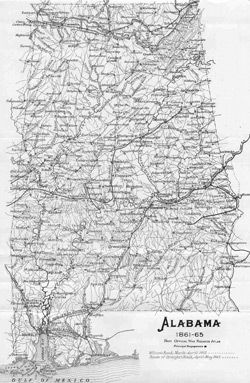 In Selma, the county seat of Dallas County, Alabama, freedpersons feel anything but free.
In Selma, the county seat of Dallas County, Alabama, freedpersons feel anything but free.
Major J. B. Houston is is the provost marshal for Selman’s Freedmen’s Burea. This month he files a report concerning a dozen cases of “white-on-black violence,” the incidents of which are “but a small part of those that have actually been” perpetrated.
This is the early stages of what will prove to be over a century of white crimes, atrocities and even terrorism committed against African Americans in and around Selma.
Autonomous black churches are now forming in the city and nearby, the lone institution that provides some sense of hope for black citizens in the postiwar South. Northern missionaries and the U.S. government provide some assistance, but ultimately the churches remain at the forefront of any advances made by freedmen.
Foremost within African American church life are Baptist churches, whose leaders play critical roles in the black community this month and for the next century. Located at the core of the city’s African American community is the First Colored Baptist Church, tracing its roots to 1845 as a white-controlled mission of the white First Baptist Church. It stood as one of only four black Baptist congregations in Alabama as late as 1864.
In the immediate post-war years, however, the number of black Baptist congregations in Alabama expands rapidly. Black Baptist minister Rev. Charles O. Booth said of these years:
The change which the war had wrought as to the civil status of the black man, changing him from slave to freedman, affected his church standing, so that ex-master and ex-slave did not quite fit each other in the old “meeting house,” as they had done in days of yore. There was restlessness on one side, and suspicion on the other. The black man wanted to go out and set up housekeeping for himself, while the white man in most cases feared and hesitated to lay on the hands of ordination. We did not know each other. The “negro preacher” on one side of the river had but little opportunity to know his brother on the other side. Truly our beginning was dark and chaotic.
The black church’s tradition is that the white Baptists generously gave them $2,000 to assist with construction. The white church’s tradition is that the black members tried to ‘take over’ the church, in which they formed a majority, and were scared off when pastor J.B. Hawthorne met them at the door with a pistol.
In 1871 and again in 1872 the state’s newly created black Baptist convention meets at Selma’s First Colored Baptist Church, signifying the congregation’s leading role in African American Baptist life in Alabama.
Source: “The Civil Rights Movement in Selma, Alabama, 1865-1972,” National Register of Historic Places (link)


